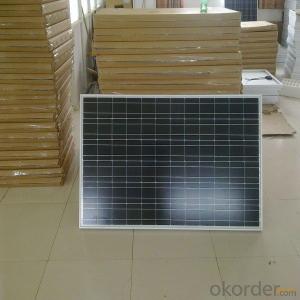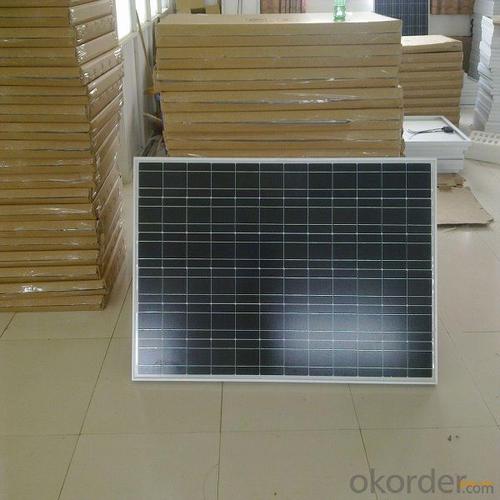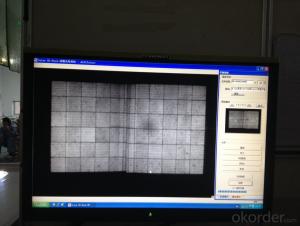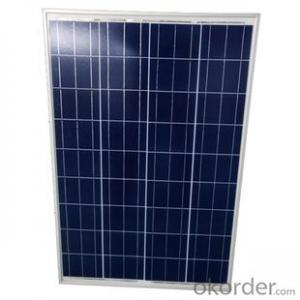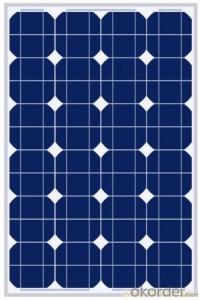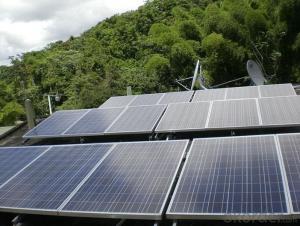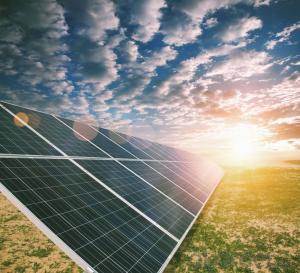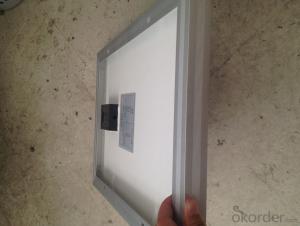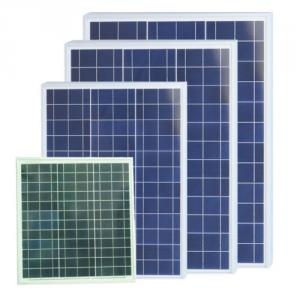High Quality Polycrystalline Solar Panels for Tiny House
- Loading Port:
- Tianjin
- Payment Terms:
- TT OR LC
- Min Order Qty:
- 1000 watt
- Supply Capability:
- 10000000 watt/month
OKorder Service Pledge
OKorder Financial Service
You Might Also Like
Specification
Product Description
Key Specifications/Special Features
Maximum power voltage Vmp: 29.5V
Maximum power current Imp: 7.45A
Open circuit voltage Voc: 37.0V
Short circuit current Isc: 8.10A
Maximum system voltage V DC: 1,000V
Encapsulated solar cell efficiency nc: 18.10%
Module efficiency nm: 14.90%
Solar cell and configuration: polycrystalline
Solar cell technology and size: 156 x 156mm
Number of bypass diodes and type: 3-piece
Maximum series fuse rating: 15A
Temperature coefficient of power: +0.48%/°C
Temperature coefficient of Voc: -0.34%/°C
Temperature coefficient of Isc: -0.037%/°C
Nominal operating cell temperature NOCT: 25°C
Standard test conditions
Irradiance 1,000V/m2, AM1.5 spectrum, moduletemperature 25°C
Operating temperature: -40 to +80°C
Dimensions: 1,640 x 992 x 50mm
Installation hole dimensions: could be following request
Cable length: 90mm
Weight: 22.5kg
Number of draining holes in frame: 4-hole
Construction: 60-piece (6 x 10)
Frame: 50mm
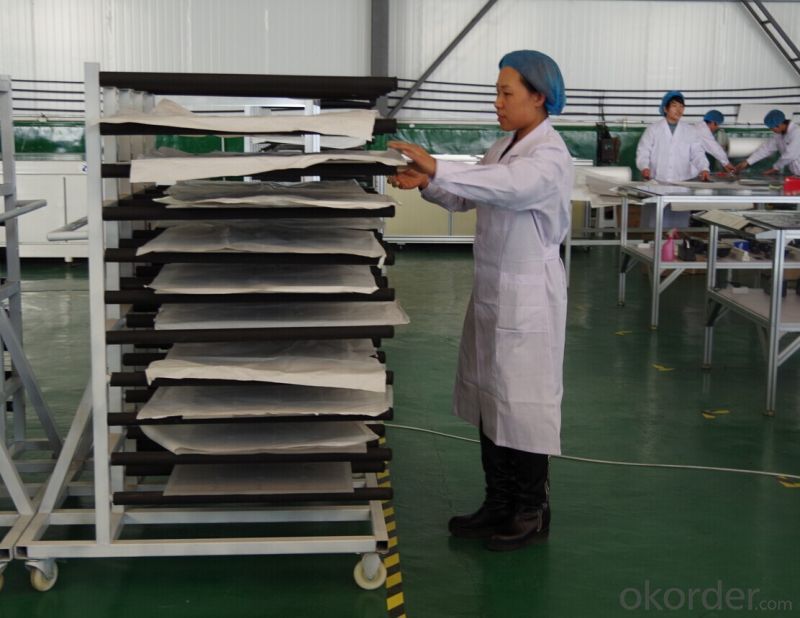
Product Details
| ELECTRICAL CHARACTERISTICS | ||||||||||
| Maximum Power as per STC | Pmax(W) | 230 | 235 | 240 | 245 | 250 | ||||
| Power Tolerance | % | ± 3% | ||||||||
| Maximum Power Voltage | Vm(V) | 30.48 | 30.6 | 30.66 | 30.35 | 30.46 | ||||
| Maximum Power Current | Im(A) | 7.6 | 7.68 | 7.83 | 8.08 | 8.21 | ||||
| Open Circuit Voltage | Voc(V) | 36.6 | 36.72 | 36.84 | 36.36 | 36.5 | ||||
| Short Circuit Current | Isc(A) | 8.17 | 8.23 | 8.32 | 8.79 | 8.93 | ||||
| Maximum System Voltage | VDC | 1000 | ||||||||
| Cell Efficiency | % | 15.8 | 16.1 | 16.4 | 16.8 | 17.1 | ||||
| Module Efficiency | % | 14.1 | 14.4 | 14.7 | 15.0 | 15.3 | ||||
| Cells per Module | Pcs | 60 | ||||||||
| Cell Type | Polycrystalline silicon | |||||||||
| Cell Size | mm | 156 x 156 | ||||||||
| Bypass Diodes | Pcs | 12Amp, 6 pcs | ||||||||
| Max. Series Fuse Rating | A | 15A | ||||||||
| Temperature coefficient of Isc | % / | 0.05 | ||||||||
| Temperature coefficient of Voc | % / | -0.35 | ||||||||
| Temperature coefficient of power | % / | -0.47 | ||||||||
| NOCT- Nominal operating cell temperature | 47 ± 2 degree | |||||||||
| Operating Temperature | -40 to +85 degree | |||||||||
| MECHANICAL CHARACTERISTICS | ||||||||||
| Dimensions | mm | 1650 x 990 x 50 | ||||||||
| Weight | Kg | 19.8 | ||||||||
| Type of Junction Box | TUV certified, IP65 | |||||||||
| Cable Type, Diameter | TUV certified, 4mm 2, 90 cm in length | |||||||||
| Connector | compatible to Type 4 (MC4) | |||||||||
| Tempered Glass | 3.2 mm, high transmission, low iron | |||||||||
- Q: Can solar panels be used to power a hotel?
- Yes, solar panels can be used to power a hotel. Solar energy can be harnessed through solar panels and converted into electricity to meet the power requirements of a hotel. This renewable energy source can help reduce the hotel's reliance on traditional electricity grids and lower its carbon footprint. Additionally, advances in solar technology have made it more efficient and cost-effective, making it a viable option for powering hotels.
- Q: I want to install a solar panel on my car. I want to know that how much energy can be generated by a panel of size 4 foot by 6 foot. and the cost of installation.
- A little more than 0 watts per square foot, so that size panel would generate 250 watts under ideal conditions, which is noon on a sunny but not too hot day, near the equator. That's about /3 horsepower, or the same power as a man working hard. That is larger than needed to keep the battery of the car charged, unless you plan to run a laptop or something off it at night. The power is also too small to power the car for driving. If it's an electric car, you could get maybe another 2 miles per day out of the car, again, under ideal conditions. An RV store might have an idea of how much installation would cost. They would be accustomed to solar panels for RV's, but probably not small cars. A panel of that size would cost perhaps $500-800 just for the panel.
- Q: i want to go off grid with solar panels but i need to know how many vots and watts i need to power my house
- You need an expert to figure out how many watts of power you will need and how many solar panels you will need to generate the wattage necessary to run your home plus charge the batteries for night use.
- Q: we are trying to reduce a solar panel from 9 volts to 3 volts. What do we need to make this work...
- Build okorder /
- Q: Can solar panels be installed on a swimming pool?
- Yes, solar panels can be installed on a swimming pool. These panels can be used to heat the water in the pool, reducing the need for traditional heating methods and saving energy costs. Additionally, solar panels can also be used to power pool pumps and other equipment, making swimming pools more energy-efficient.
- Q: Can solar panels be used for powering a concert venue or entertainment center?
- Yes, solar panels can be used to power a concert venue or entertainment center. Solar energy can be harnessed through panels and converted into electricity, which can then be used to power various aspects of the venue, such as lighting, sound systems, and equipment. By utilizing solar panels, these venues can reduce their carbon footprint and potentially save on energy costs in the long run.
- Q: Actually I want to convert my home electricity on Solar Panel to cut down electricity costI have 2 AC's, a refrigerator, 3 Television, 2 Computers, 4 Fans etc
- good okorder lots of good ideas there
- Q: Have a 20V 40W solar panel and it is attach to two backup batteries. Just want to know know how many watt of inverter do I need?
- It depends on what you want to run from the panel. A 20W inverter might last a long time, but would not run much. A 00W inverter might run down your batteries in a few hours. It might help if you posted how much capacity (Volts, Amp-Hours) the batteries have.
- Q: I am looking at a need of roughly 30w/hour need per 24 hour period. I have spent several hours now looking for information online and have found plenty of info regarding the panels themselves, but information regarding the batteries backups have been slim. I understand that there is a 5-7 hour peak time to collect the energy. I am looking for information regarding the batteries themselves. How do the batteries work, what size batteries should I look for, and what is the life expectency for the batteries? Any website links would also be appreciated!
- First, you didn't say the voltage. Second, 30 W/hour per day. Third, battery backup capacity in Ah = Ampere hour. For 2 Volt DC here's the calculations : 30 w/hour means = 0.83 or rounded Ampere hour. You know peak time 5-7 hour (let say 6 hour)charging time (collect the sun energy). Ampere hour per day (24 hour), with 20 Ah Battery backup is OK. And the Solar Panel is 3 Ampere charging capacity minimal = 3 Amp x 6 hour = 8 Amp hour.
- Q: Are there any restrictions on installing solar panels in certain areas?
- Yes, there can be restrictions on installing solar panels in certain areas due to various factors such as local zoning laws, homeowners' associations guidelines, historical preservation regulations, and structural limitations of buildings. Additionally, some regions may have specific requirements or permits needed for solar panel installation. It is advisable to check with local authorities and consult professionals to ensure compliance with any restrictions or regulations before installing solar panels.
Send your message to us
High Quality Polycrystalline Solar Panels for Tiny House
- Loading Port:
- Tianjin
- Payment Terms:
- TT OR LC
- Min Order Qty:
- 1000 watt
- Supply Capability:
- 10000000 watt/month
OKorder Service Pledge
OKorder Financial Service
Similar products
Hot products
Hot Searches
Related keywords
